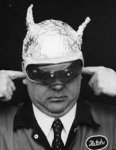Hi Bob. Not sure if this is what you wanted, but ...
PF/SF-36
It is ironic and annoying how Bleijenberg, one of the authors of the accompanying editorial, praised the PACE Trial's supposed "strict criterion for recovery" (including a physical function score of ?60/100 points which on average no treatment group achieved) while previously co-authoring a 2010 paper which stated that "
A cut-off of ?65 was considered to reflect severe problems with physical functioning." (
http://eurpub.oxfordjournals.org/content/20/3/251.full.pdf). Amazing how a patient can be recovered with severe problems in function!
From Bowling et al 1999 (
http://jpubhealth.oxfordjournals.org/content/21/3/255.full.pdf), a general population which included the elderly and diseased, used by PACE to define "normal" physical function ...
Cut down on activities because of illness (in last 2 weeks):
Yes = 63.0 33.4
No = 87.7 20.2
Long term health problem:
Yes = 52.3 28.9
No 92.7 13.1
35-44 years age bracket (similar age as most PACE Trial participants) = 93.3 13.4
75-84 years age bracket = 57.9 28.6 (similar scores to PACE Trial participants after therapy, as Dolphin suggested)
From Jenkins et al 1993 (
http://www.ncbi.nlm.nih.gov/pmc/articles/PMC1677870/pdf/bmj00022-0017.pdf), cited in the earlier PACE protocol along side Bowling et al 1999 ...
Respondents reporting long standing illness: 78.3 23.2
Respondents not reporting long standing illness: 92.5 13.4
In a study of 51 community-dwelling patients (average age 71 5 years) with established chronic coronary heart disease, the average physical function score was 68 19 points, making them less disabled on average than all therapy groups post-treatment in the PACE Trial despite the latter being 30 years younger on average (
http://archinte.ama-assn.org/cgi/reprint/159/19/2357.pdf).
In a study of 303 patients with coronary heart disease (described by the authors as "a major cause of disability") undergoing cardiac rehabilitation and aged about 60 years, baseline physical function scores was on average 66 23 points and increased to 80 20 points (
http://archinte.ama-assn.org/cgi/reprint/159/19/2357.pdf).
In a study of resistance training for 25 patients described as "older disabled women with coronary heart disease", baseline physical function scores for the intervention group was 61.9 20.6 points and for the control group was 70.4 12.9 points (
http://jap.physiology.org/content/92/2/672.full.pdf). Also note table 2 where average 6MWD scores were at all times higher than PACE Trial participants (
http://jap.physiology.org/content/92/2/672/T2.expansion.html).
In a study of kidney transplant candidates, baseline physical function scores for 366 patients who later received transplants was 62.3 24.5 points (
http://cjasn.asnjournals.org/content/1/4/837.full.pdf) In a review of physical functioning in end-stage renal disease patients (
http://www.healthsystem.virginia.edu/pub/renal-services/exercise/painter-review-2005.pdf), Figure 2 presents the following scores adapted from Ware et al 1994: general population = 84; COPD (chronic obstructive pulmonary disease) = 50; CHF (congestive heart failure) = 56; MI (myocardial infarction) = 69; HD (hemodialysis) = 50.
6MWD
I have many comparisons for this, but two which provide good context for where PACE Trial participants are scoring, starting out as impaired as a general elderly cohort aged 774yrs and finishing up as impaired as patients with serious cardiopulmonary disorders.
34488m (n=2117) - a general elderly cohort aged 774yrs (60% female) who completed the 6MWT
http://chestjournal.chestpubs.org/content/123/2/387.full.pdf
393115m (n=1083) - patients from 11 studies on a diverse range of cardiopulmonary disorders: end stage lung disease, dilated cardiomyopathy, congestive heart failure, pulmonary hypertension, chronic obstructive pulmonary disease, interstitial lung disease; [range, 294139m (ESLD) to 463107m (DC)]
http://www.biomedcentral.com/content/pdf/1471-2466-10-31.pdf
